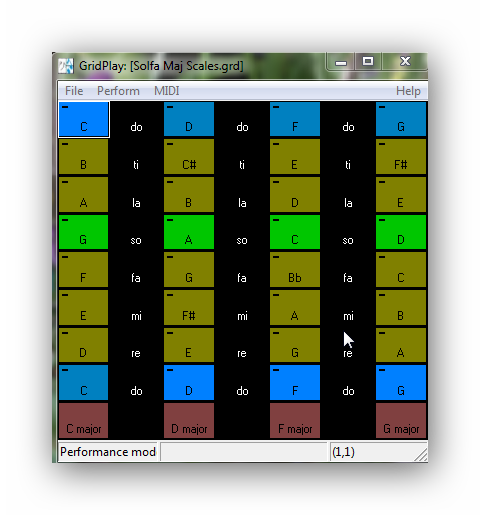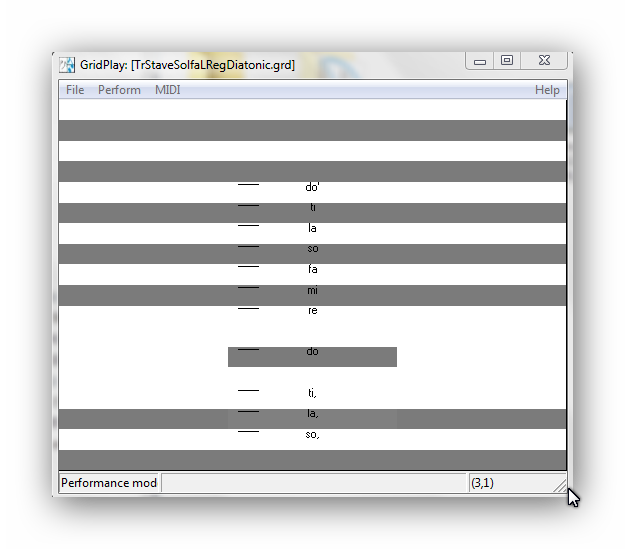Tonic sol-fa isn’t exactly fashionable in music education today , so many amateur musicians know nothing of it. To my mind, this is a great pity. Familiarising themselves with this system has the potential, I believe, to be the most effective form of self-help that they could undertake.
So, what is this sol-fa thing? Tonic, or relative, sol-fa is a notation system in which each note of a scale is given a single-syllable name – the first degree of the scale is “do”, the second “re”, and so forth. As a syllable is associated with a degree of the scale, the relationships between the various symbols remain the same when a tune is transposed. This is sometimes called the ‘movable do’ system of sol-fa. One learns to recognise the aural characteristics of degrees of the scale and the intervals between them.
Identifying notes by their sol-fa syllables facilitates memorisation, playing by ear and transposition. It also makes it easier to learn scales and to grasp many aspects of theory. The Kodaly method is probably the most well-known instructional system based on tonic sol-fa. It is essentially a system of aural development and, like any other developmental process, it takes time and nurturing to become established. However, some of the benefits listed above can be enjoyed by those who have familiarised themselves with the principles but are still in an early stage of internalising the aural impressions created by movement between the various degrees of the scale.
Historically, tonic sol-fa has been a powerful tool to improve access to music learning for disadvantaged groups. In the UK, it was adopted as the instructional system for singing in Victorian schools. This musical education provided a strong basis for a choral tradition and enabled the factory-workers and miners of the day to quickly learn great choral works, the performance of which gave a wonderful new dimension to their harsh lives. In Hungary, Zoltan Kodaly used it to roll out a nationwide system of high-quality music education that made the experience of great music available to rich and poor alike.
I, also, have found this a means of widening inclusion, as the following example demonstrates. A few years ago, I was directing regular sessions for a small ensemble of experienced players. A young Ghanaian, in the UK for medical treatment following a motor cycle accident, was sitting in on the sessions and it was clear that he would love to participate! We had a keyboard that could be made available to him but he was a complete beginner and didn’t read music. As luck would have it, the tea-break conversation turned to tonic sol-fa and Philip said, “That’s how we did music when I was at school in Ghana.” So, we had our way in! I added sol-fa syllables to his music and he quickly learned to identify the notes for C major and A minor on the keyboard (which had a transpose facility). Using the sol-fa syllables to further support his good aural skills, he was able to participate in subsequent playing sessions and, in the process, discovered a new interest that would help him in rebuilding his shattered life.
I envy those who have been brought up on tonic sol-fa, developing strong aural skills from an early age. There are some excellent pre-school music schemes incorporating it and these provide a marvellous start for a young musician. However, it’s never too late – go for it!
Update 6 March 2013: See my post Learn Tonic Sol-fa with GridPlay for details of free Windows software for learning tonic sol-fa.
Several posts on my blog deal with aspects of tonic sol-fa, so if you don’t see what you want in this post, check the ‘Category’ menu in the sidebar for more on this subject.



